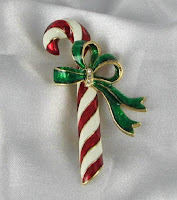 The spectacular Cartier designs have amazed buyers and collectors of jewelry for decades because of their trend setting creations. Figurals make up quite a significant portion of the Cartier Collection, with designs ranging from bejeweled roosters to stunning tigers.
The spectacular Cartier designs have amazed buyers and collectors of jewelry for decades because of their trend setting creations. Figurals make up quite a significant portion of the Cartier Collection, with designs ranging from bejeweled roosters to stunning tigers.This book details their designs from 1937 through the beginning of the 21st century. There are hundreds of close up photographs, as well as archival drawings and photos taken of famous people wearing the design in real life.
These real life photos give a fabulous look at fashion styles from the actual time that the pieces were created, and this gives additional visual details of styles, hair and make up fashions from the period.
The book discusses the rise of the firm and offers a tribute to the multiple designers responsible for the myriad of jewelry pieces sold by Cartier.
The company was founded in 1847 in Paris by Louis-Francois Cartier. His son Alfred took over the administration of the company in 1874, but it Alfred's sons Louis, Pierre and Jacques who were responsible for establishing the world wide fascination with the name Cartier. At first known for watches, by the early 1900s, Cartier had branches in London, New York and St. Petersburg.
Their early Art Deco designs, in particular the use of Tutti Frutti jewels made them at the top of wealthy patrons list of jewelry designers.
The book is available from leading book sellers or online from amazon.com and other internet book sellers. If you are a lover of Cartier jewelry or a vintage jewelry collector, then this book is a must have.
With this year's recent celebration of 100 years of Cartier, this book goes hand in hand with the celebration and gives much of the history around the House of Cartier. Looking through this book and seeing page after page of stunning photos of their designs, shows why the name Cartier is synomous with perfection.





















 metals are decorated with 18-24K gold in decorative patterns. During the procedure, artisans cover the surface of an object with fine grooves, using sharp cutting tools. Figures are then drawn on the scored surfaces. Next gold wires are pressed into these grooves with a steel punch and hammer.
metals are decorated with 18-24K gold in decorative patterns. During the procedure, artisans cover the surface of an object with fine grooves, using sharp cutting tools. Figures are then drawn on the scored surfaces. Next gold wires are pressed into these grooves with a steel punch and hammer.










